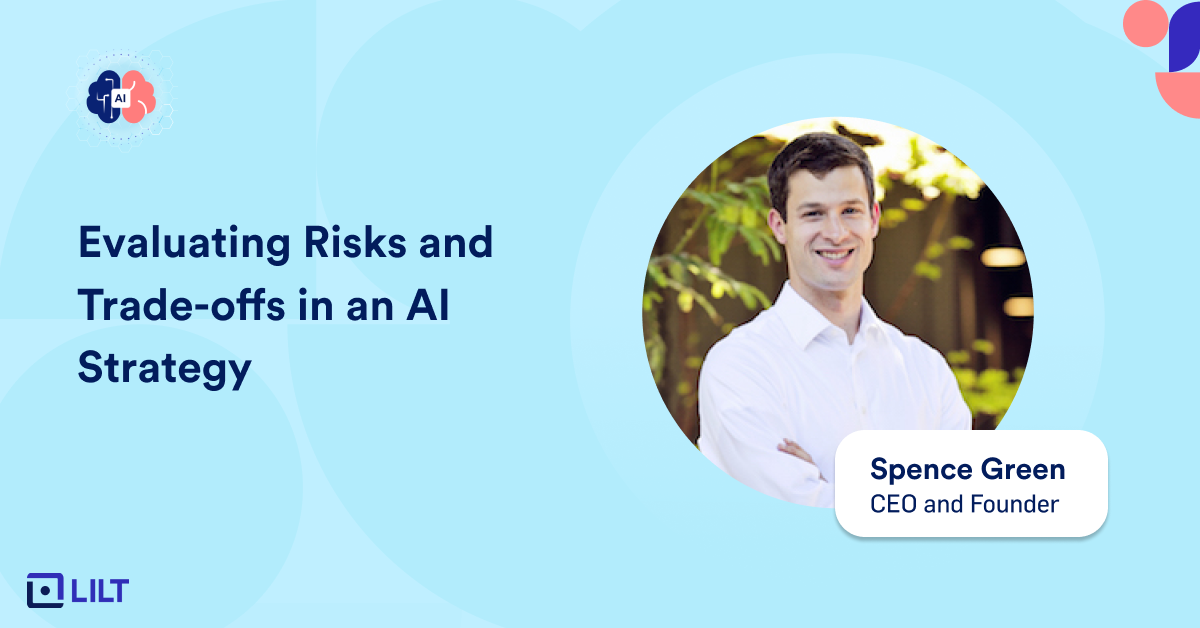WLSP: Maximize and Scale Your Localization Programs In 2023 Webinar Recap

Our recent webinar featured industry experts:
• Tanya Gadea (VP of Production at Lilt)
• Loy Searle (Senior Director of Localization & Globalization at Workday)
• Brittney Benchoff (Head of Product at Lilt)
In this blog post, we share what was discussed in this discussion and provide three key takeaways.
How to Win Global Customers with Language
95% of companies overlook language as an essential part of the customer experience, preventing their reach to a global audience.
Searle shared, “As companies are growing globally and taking on new markets and developing new landscape, the very first thing that most companies need to do is present their products and their marketing and their value proposition in the language of the people they hope to sell to…sometimes we don't get thought of as revenue generating…but without us, there are no global products.”
4 Key Localization Considerations
Localization can be broken down into four steps: initial scope, assemble, send for translation, and continuous updates.
Initial Scope
• Identify your target market
• Put together a team of experts
• Determine cultural, linguistic, and technical differences
Assemble
• Decide on the content you will localize
• Adapt your design and graphics
Send for Translation
• Set up integrations within systems you’re already using
• Send content for translation
Continuous Updates
• LQA localized content
• Continue to update content
• Expand into additional languages
Building Efficient Translation Processes with AI and MTPE
The panel then discussed the importance of linguists utilizing AI & MTPE to bridge the gap between human efficiency and AI accuracy.
Benchoff spoke about scaling programs and the challenges of their implementation. “There’s two major limiting factors that every organization faces. It's time and money. AI is one major way to help scale, but there's also a whole separate space of opportunity based on how you can optimize processes with AI and automation.”
Later on, she shared, “There's just this whole realm of opportunity in the types of AI we use to drive the translations themselves. [MTPE works by first] generating target language content and then having a human linguist review the output for errors that they can correct. One of the most important aspects of any machine translation that is used is to ensure that the engine is constantly being updated with your content to build domain and specialized feedback and improve the future translations.”
Gadea added that new technologies and systems are already beginning to tap into the potential of generating creative content. “What you see here is a fully technology-enabled approach to localization, where [content will] get pre-processed, translated reviewed, and post-processed as well. The way we want to think about MTPE is we want to allow [the language system] to do really good—almost creative work—when generating content instead of just editing.”
As more enterprises look to invest in AI technologies to optimize business outcomes and efficiencies, Searle shares the following advice: “The most important challenge we can give ourselves when we're designing technology and processes is think about how does this scale?”
Set KPIs Early to Measure Success
When measuring the success of your localization programs and initatives, keep your eyes on cost, speed, and quality of translation. However, depending on your team’s higher level objectives, your KPIs may differ.
In fact, Searle shares that she believes that there is another metric that’s worth tracking. She shared, “I think that the most important metric we don't own, that we should adopt, is the opportunity number. What revenue would we not generate by not doing this work? And sometimes that's a different kind of argument. You can say the cost of not doing this is [X]. I would call it kind of a time to value measure.”
Q & A
For the remainder of the webinar, panelists answered questions from attendees. Below are some of the topics covered during this time.
Q: ChatGPT is a thing. How does that relate to everything we’re talking about here?
Benchoff: “Lilt’s been putting in really huge investments in the technology that we have for large models. We really need to make these models tailor-made for translation. And that's where it becomes incredibly powerful. It handles more of those nuances because it’s specialized for translation.”
Q: How do you measure the success of content localization?
Searle: “I do think there are many ways to measure this. I think the most obvious measure is, is it being read? Are people using it?”
Searle recommended implementing some simple customer feedback tool, but nothing overly annoying.
Q: How does AI work with real-time chat for customer support?
Benchoff expressed that Lilt provides both AI & human customer support options to make sure quality is as high as possible when necessary.
3 Key Takeaways
• Investing in techniques that help your organization scale, rather than simply execute. This will help your processes in the long run.
• The collaboration of skilled linguistics with AI & MTPE software can bridge the efficiency/quality gap (while keeping your translators and localization leads in the driver’s seat).
• Ensure that your systems are connected and continuously learning from linguist feedback to optimize quality and speed at scale.

